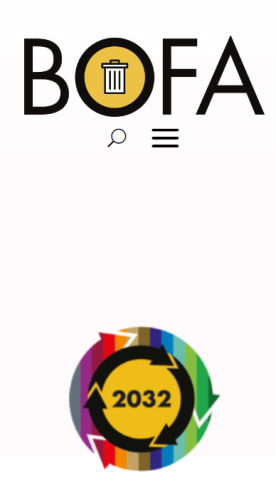The key to plastic recycling is found in the handling of food grade PET
Food grade PET is the key to plastic waste recycling. No other plastics are permitted for reuse in the production of new food packaging. PET is currently the only plastic that can be 100 % recycled.
The municipal waste company at Bornholm (DK), BOFA, wants to phase out the waste incinerator in 2032 and shift to prevention, 100% reuse and recycling. BOFA needs to address the plastic recycling system failures concerning the plastic collected from households. Currently it all ends up in the incinerator, providing no reverse flow from household waste to new packaging.
The primary step for the reverse flow in the closed loop of food/beverage businesses is the separate handling of food/beverage packaging. Mixing food/beverage and non-food PET packaging can result in contamination, ruining the possibility of recycling all the PET in new food packaging.
BOFA sees opportunities in being first-movers with respect to a separate handling like the closed loop food/beverage systems provide.
Two scenarios are being tested:
- collection of mixed plastic waste from households where lids, caps etc. are kept on bottles and containers
- separate collection of food packaging.
- Manual sorting provides better sorting results.
- Plastic waste consist mostly of food packaging (70-80% in pcs).
- Foils/laminates make up 60-80% in pcs of food grade plastic, complicating the sorting/closing of loops.
- PET makes up 20-28% in pcs of food packaging.
- If BOFA can reliably sort out food grade PET from household plastic waste, it might be possible to sell it back to responsible producers. It might be possible to sell other types of plastics for downcycling until a shift to PET. The logistics of closing the loops present a challenge, but these systems may prove to be economically sustainable.
- Other challenges include how citizens should sort in order to ease sorting and avoid contamination and the further development of making reuse and recycling economically sustainable.

